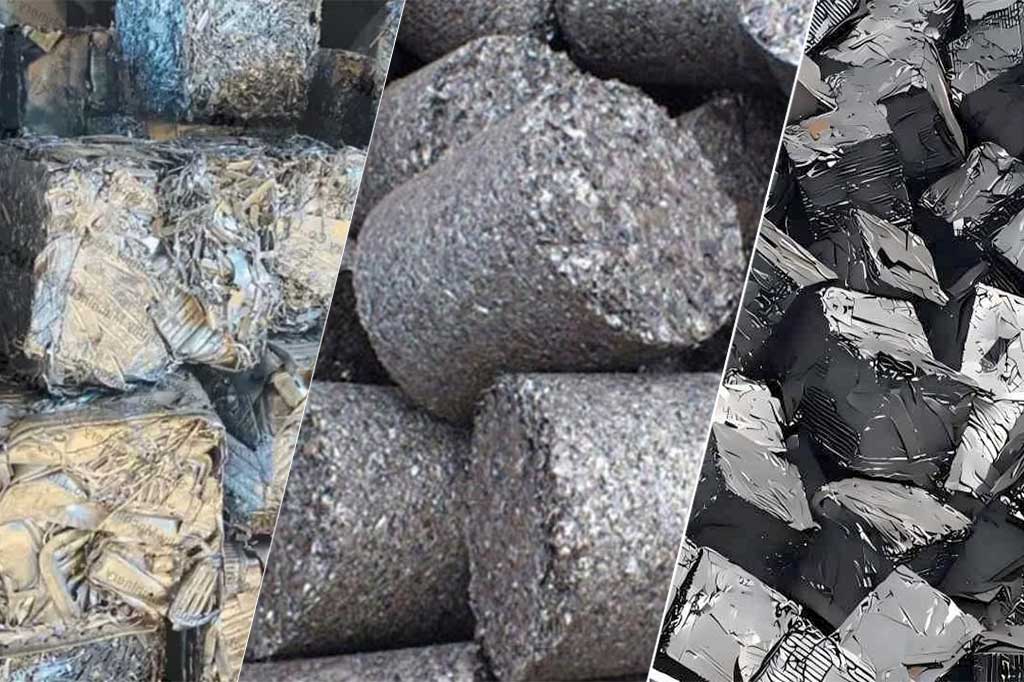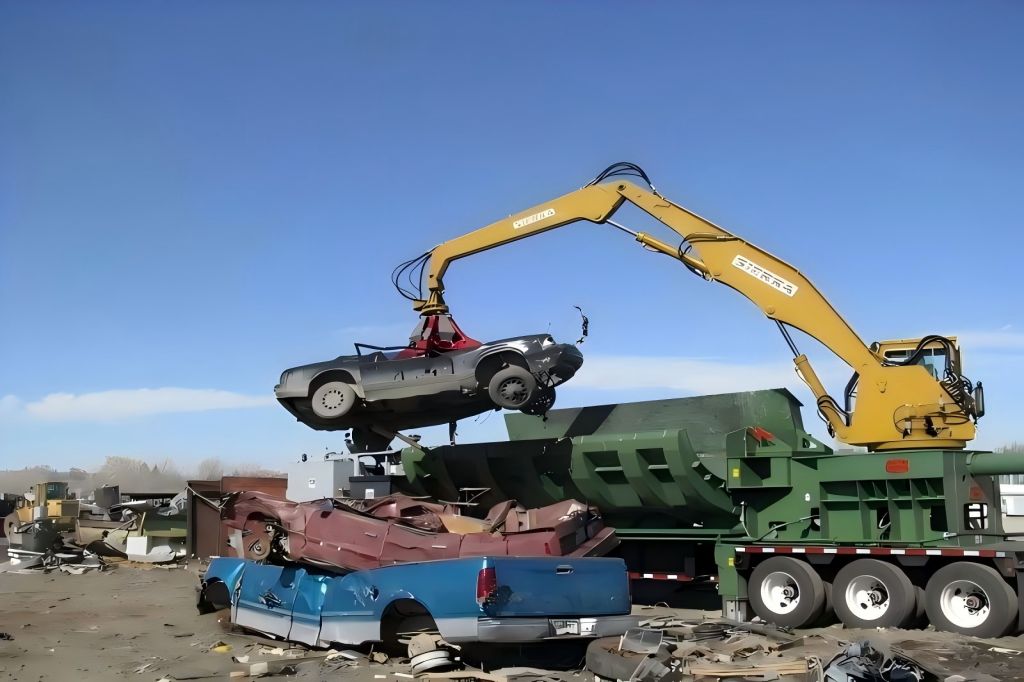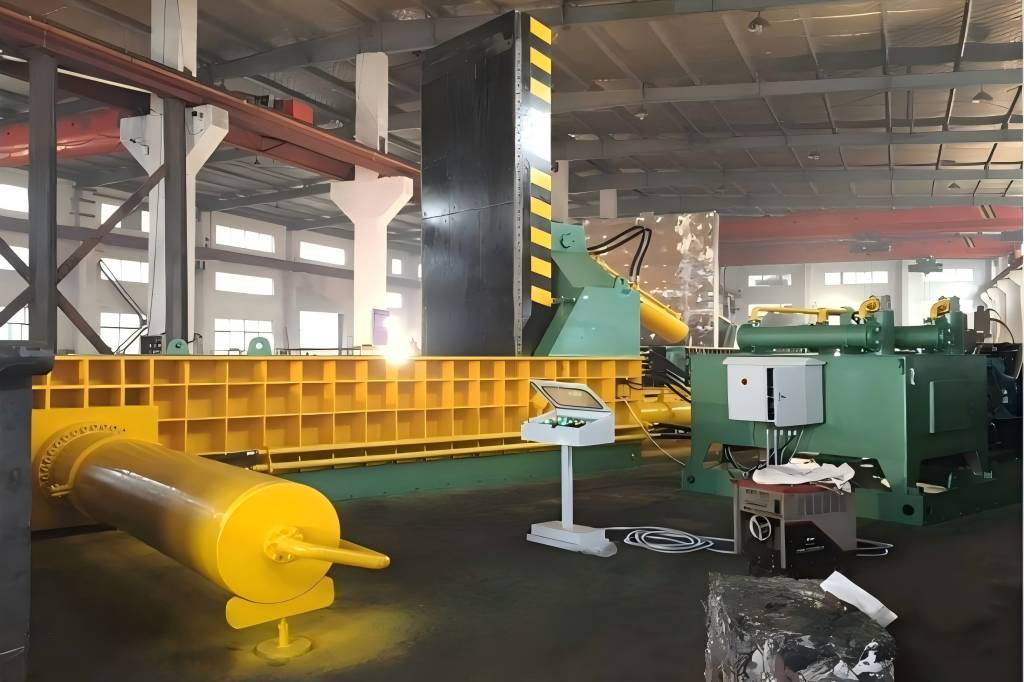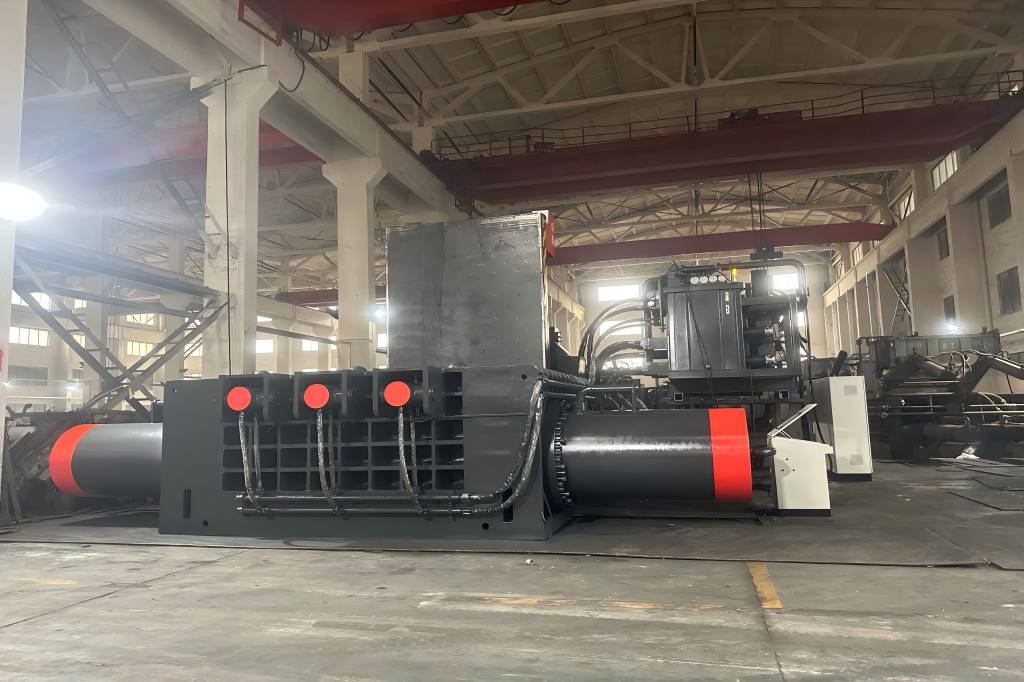Metal baler machines compact scrap metal into various bale shapes, which directly impact compression, storage, and transportation efficiency. Selecting the right bale shape is crucial for optimizing recycling operations and improving cost-effectiveness. This guide will guide you in selecting the perfect shape to meet your specific needs.
Understanding Metal Baler Machines
Metal baler machines are powerful devices designed to compact large volumes of scrap metal into manageable, transportable bales. These machines are widely utilized in industries like scrap metal recycling, automotive, manufacturing, and waste management. Their main purpose is to compress metal waste, simplifying storage and transportation to recycling facilities.
Key Features and Functions
- Compression Power: Metal baler machines use hydraulic systems to apply immense pressure to compress metals into tightly packed bales. The machine’s capacity and design determine the size and shape of the bales.
- Automated vs. Manual Operation: Many modern balers are automated, requiring minimal operator intervention, while others need manual handling.
- Versatility: These devices are capable of processing a wide range of metals, such as aluminum, copper, steel, and other non-ferrous metals. Depending on the machine’s configuration, it can produce different bale shapes and sizes.
Metal balers are essential for efficient metal recycling because they reduce the space taken up by scrap materials, making transportation and storage more efficient. The choice of bale shape directly impacts these aspects, making it a critical decision for businesses involved in the recycling process.
Common Bale Shapes
There are four primary bale shapes commonly produced by metal baler machines: square, rectangular, cylindrical, and octagonal. Each shape offers distinct advantages depending on the type of material being baled and the logistical requirements of the operation.
Square Bales
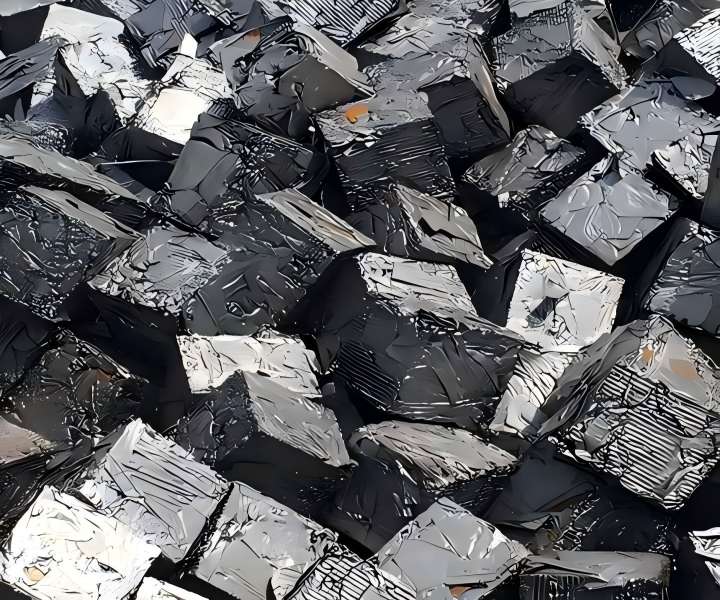
Square bales are among the most common shapes in metal recycling due to their versatility and ease of handling.
Square bales are typically used for lightweight metals or smaller scrap materials. Their shape is perfect for efficient stacking, making them advantageous when storage space is limited.
Pros | Cons |
|
|
Rectangular Bales
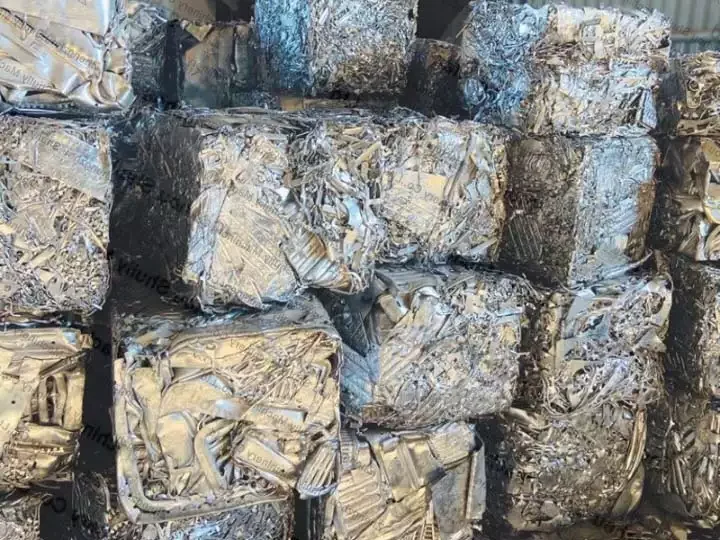
Rectangular bales are larger than square bales, They are well-suited for heavy and dense materials such as steel and copper.
These bales are made to make the best use of available space both during transit and at warehouses. They are perfect for large-scale recycling processes that handle heavy metals because of their size.
Pros | Cons |
|
|
Cylindrical Bales
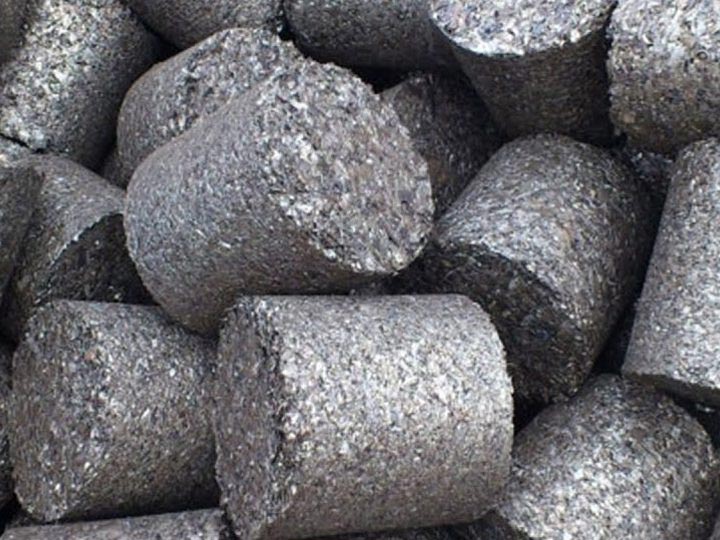
Cylindrical bales are less common but offer unique benefits for specific types of metal recycling operations.
These bales are often used for malleable materials like aluminum or copper wire. The cylindrical shape distributes pressure more evenly, making it suitable for materials that require uniform compaction.
Pros | Cons |
|
|
Octagonal Bales
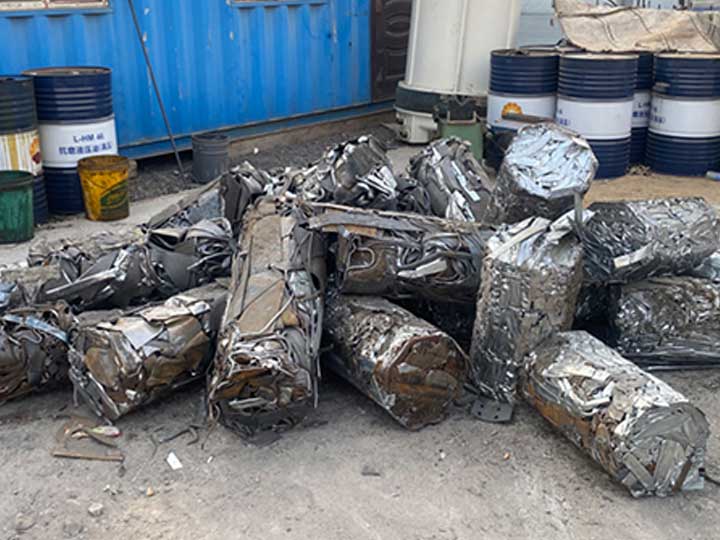
Octagonal bales offer a balance between stability, compaction, and ease of transport, making them a versatile option for many industries.
These bales are often used in situations where stability and ease of transport are critical. Their shape allows for efficient stacking while reducing material stress during compression.
Pros | Cons |
|
|
Factors to Consider When Choosing Bale Shape
Choosing the right bale shape for your metal recycling operation involves considering several factors, including the type of material being processed, storage efficiency, transportation requirements, and compaction needs.
Type of Metal
Different metals respond differently to compression, and this should be a primary consideration when selecting a bale shape.
- Aluminum and Copper: These non-ferrous metals are often better suited to cylindrical or octagonal bales due to their malleability and the need for uniform compaction.
- Steel and Ferrous Metals: Heavier and denser metals like steel are best compressed into rectangular or square bales, where space efficiency and easy handling are critical.
Storage and Space Efficiency
The shape of your bales can dramatically impact how efficiently you use your storage space. Square and rectangular bales are generally preferred for warehouse storage as they stack neatly and maximize available space.
Transportation and Handling
Transportation efficiency depends heavily on maximizing container or truck capacity. Rectangular bales are ideal for long-distance transport, maximizing the number of bales that fit within shipping containers. In contrast, cylindrical bales may take up more space, reducing overall transport efficiency.
Compaction and Density
Some bale shapes allow for better compaction, which is essential for maximizing the value of the baled materials. Rectangular and square bales often allow for higher density, making them preferable for heavier materials, while cylindrical bales are better for more malleable materials.
Optimizing Performance Based on Bale Shape
To optimize your metal recycling operation, it’s essential to match your machine’s capacity and features with the most suitable bale shape. The choice of shape should be informed by the type of metal, operational requirements, and logistics.
For example:
- Automotive Recycling Industry: Rectangular bales are commonly used for compressing car parts and metal scraps due to their ability to handle large, heavy materials efficiently.
- Aluminum Recycling Industry: Cylindrical bales are often preferred for compressing aluminum cans and wires, as this shape provides even pressure distribution and continuous compaction.
- Construction Industry: Rectangular bales are ideal for compressing construction scraps like steel beams and pipes, allowing for dense compaction and efficient space utilization in the storage and transportation of heavy materials.
- Electronic Waste (E-Waste) Recycling Industry: Octagonal bales are commonly used for compacting e-waste materials like metals, plastics, and circuit boards, providing balanced compression and stability for mixed materials during transport and storage.
- Steel Manufacturing and Scrap Metal Recycling Industry: Rectangular bales are often used for compressing dense scrap metal like steel and iron, maximizing compression, ensuring easy handling, and optimizing transportation capacity for heavy materials.
Selecting the Appropriate Machine for Your Bale Shape
The configuration and design of your baler machine are essential in producing the desired bale shape. Some machines are specifically designed to produce rectangular bales, while others can be adjusted to create various shapes.
- Vertical Baler Machines: Suitable for producing square and rectangular bales, making them ideal for operations with space constraints or smaller volumes of scrap metal. Effective for lightweight materials like aluminum.
- Horizontal Baler Machines: Typically used for larger operations and can produce rectangular or cylindrical bales. Offer greater compression power and are ideal for dense materials like steel and copper.
- Two-Ram Balers: Versatile machines that can handle various materials. Can produce square, rectangular, and octagonal bales, making them ideal for operations requiring flexibility in bale shape.
- Auto-Tie Balers: Horizontal balers equipped with an automatic tying system. Ideal for continuous, large-scale operations, producing rectangular bales with minimal labor involvement and maximizing efficiency.
- Closed-Door Manual-Tie Balers: Designed for high-density bales, especially for heavy materials like steel. The manual-tie system provides better control over the bale’s shape and density, ensuring maximum compaction.
- Mobile Balers: Portable machines used for on-site scrap metal processing. Suited for smaller operations or temporary locations, producing square or rectangular bales for lightweight or mid-sized scrap materials.
- Customizing Your Machine: If your operation requires multiple bale shapes, it may be worth investing in a machine that allows for customization. Adjustable molds and settings enable the production of different bale shapes as needed.
Conclusion
Selecting the right bale shape for your metal baler machine is critical for maximizing operational efficiency, reducing storage and transportation costs, and optimizing handling processes. Considering material type, storage capacity, transport efficiency, and compaction needs allows you to make informed choices that improve your recycling operations.
Consult with metal baler machine manufacturers and recycling experts to find the best solution for your operation, ensuring you select the optimal bale shape for your specific materials and logistical needs.

